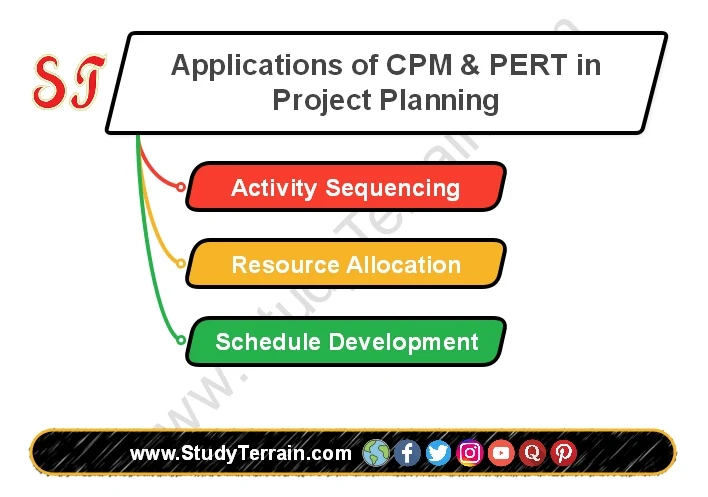In the dynamic landscape of project management, achieving efficiency, and maintaining control over complex projects are paramount for success. Critical Path Method (CPM) and Program Evaluation and Review Technique (PERT) stand as indispensable tools in this endeavor, offering comprehensive approaches to project planning, scheduling, and control. This article explores the diverse applications of CPM and PERT techniques in project management, shedding light on their significance in optimizing processes, managing resources, and mitigating risks.
Table of content (toc)
Understanding CPM and PERT Techniques
CPM and PERT are both network-based techniques used to analyze and manage project schedules. While CPM focuses on identifying the critical path—the longest sequence of dependent activities—in a project network, PERT emphasizes probabilistic estimates of activity durations to account for uncertainty and variability. Together, these techniques provide project managers with invaluable insights into project timelines, resource allocation, and risk management.
Applications of CPM & PERT in Project Planning
 |
| Applications of CPM & PERT in Project Planning |
Activity Sequencing
CPM and PERT techniques aid in sequencing project activities based on their dependencies and logical relationships. By visualizing activity sequences and dependencies, project managers can identify the most efficient paths to project completion and optimize resource utilization.
Resource Allocation
CPM and PERT facilitate effective resource allocation by identifying critical activities and resource constraints. Project managers can allocate resources strategically to activities on the critical path to ensure timely completion and prioritize resource allocation based on project priorities and constraints.
Schedule Development
CPM and PERT techniques provide a structured approach to developing project schedules, incorporating activity durations, dependencies, and resource constraints. Project managers can create realistic and achievable schedules that serve as roadmaps for project execution and monitoring.
Applications of CPM & PERT in Project Control
 |
| Applications of CPM & PERT in Project Control |
Schedule Monitoring
CPM and PERT enable project managers to monitor project progress against the planned schedule by tracking actual activity durations and comparing them to the baseline schedule. Deviations from the schedule can be identified early, allowing for timely corrective action to keep the project on track.
Resource Management
CPM and PERT techniques assist in managing project resources effectively by identifying resource bottlenecks, optimizing resource utilization, and reallocating resources as needed to address changing project requirements.
Risk Management
CPM and PERT provide project managers with insights into project risks by analyzing the impact of uncertainties on project schedules and identifying critical activities that are most sensitive to risk. This enables proactive risk mitigation strategies to be implemented to minimize project delays and disruptions.
Real-World Examples of CPM & PERT
 |
| Real-World Examples of CPM & PERT |
Construction Projects
In construction projects, CPM and PERT techniques are used to sequence activities such as site preparation, foundation construction, and building erection, optimizing construction schedules and resource allocation to meet project deadlines.
Product Development
In product development projects, CPM and PERT techniques aid in scheduling design, prototyping, testing, and production activities, ensuring timely delivery of high-quality products to market.
Information Technology Projects
In IT projects, CPM and PERT techniques assist in planning and scheduling activities such as software development, testing, and implementation, enabling project managers to manage project timelines and resource allocation effectively.
Conclusion
In conclusion, CPM and PERT techniques play integral roles in project planning and control, offering invaluable tools for optimizing processes, managing resources, and mitigating risks. By leveraging these techniques, project managers can develop realistic schedules, allocate resources strategically, monitor project progress effectively, and proactively manage project risks. Ultimately, the applications of CPM and PERT techniques empower organizations to achieve greater efficiency, productivity, and success in their projects.
For more visit Quantitative Techniques For Managers



